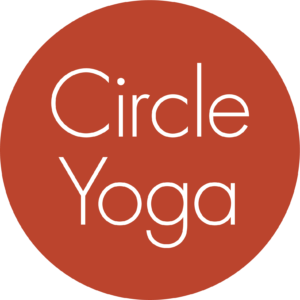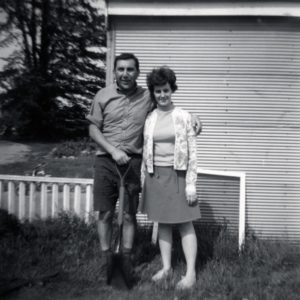February 2014
Dear Friends,
My parents had very different ways of dealing with difficulties. My Dad, a second generation Armenian, born and raised in Harlem and later New Jersey, expressed his thoughts and emotions freely. When he was mad, he yelled and when he was sad, he wept. When we kids were upset, he recognized that and wanted to talk it through.
My mom traced her American roots back to the Mayflower with the exception of a few Irish and English Protestant immigrants. She was born and raised in a small town in Michigan and wasn’t one to spend a lot of time self-reflecting on her emotions. She particularly objected to what she called “feeling sorry for oneself.” When we were feeling sad or frustrated, the best thing to do was to suck it up and move forward.
While I experienced these two very different ways of responding to life’s ups and downs, I tended more toward the emotional. I married someone, however, who prefers to move forward without dwelling on emotions. He and my mom bonded once during a conversation about keeping the “nuclear waste” of our emotions buried under the river. “Why dig them up,” they asked, “when it just pollutes the water?” I will admit to stirring up my emotions, and I probably got stuck there for a little too long. When my sweet quiet father-in-law visited, he often commented on what a “passionate” family my husband and I were raising.
I recently stumbled upon a talk given by the neuroscientist Rick Hanson at Google Headquarters. He was describing how we could help our brains reach an optimal condition. His optimal brain is one in which we are self-actualized, productive and experiencing peace –basically enlightened. To rewire our brains into this optimal state, he said, we need to learn how to flow with the difficult and challenging situations that inevitably arise in our lives. His suggestion is to do two things: first give ourselves empathy for any strong negative emotions such as sadness or anger, and second, look for the positive aspects of the situation and move forward.
When I heard him say this, I realized that he was, in effect, saying that both my parents were right. We need both the ability to “feel sorry for ourselves” and the ability to bury the waste and move on. If we never move on from embracing own strong emotions, in a kind of self-pitying way, we won’t reach the enlightened, productive state. And if we can’t give ourselves compassion for our difficulties, we may move one, but without the kind of inner stability and strength that we need to be self-actualized.
Author and human development expert Kristin Neff clarifies the difference between self-compassion and self-indulgence. Self-compassion is concerned with being kind and is beneficial to our long-term well being (e.g., eating well.) Self-indulgence, on the other hand, is about giving ourselves short-term pleasure but with potential long-term harm (e.g., addictions.) I think that self-indulgence was what my Mom was referring to when she worried that I was spending too much time “feeling sorry for myself.”
The practice described by Hanson and Neff is not different from what Zen master Thich Nhat Hanh teaches about embracing our strong emotions with mindfulness the way a mother might embrace her crying baby. As a matter of fact, Neff says that self-compassion taps into our mammalian care-giving system just the way that a baby monkey or human feels safe in his mother’s arms. Feeling cared for and safe releases oxytocin and other opiates in our brains, and puts us in the mindset to be able to move past the challenges we may be facing.
Building this inner resource of self-compassion allows us to reach even further than we might otherwise because, as researcher Paul Gilbert explains, we know we won’t face as much self-criticism if we try something new and fail. His research shows that perceived confidence is the number one indicator for reaching our goals. Self-compassion is the key to this perceived self-confidence.
“NURTURING YOUR OWN DEVELOPMENT ISN’T SELFISH. IT’S ACTUALLY A GREAT GIFT TO OTHER PEOPLE.” –RICK HANSON
So how do we practice these two steps needed to transform a difficult situation? Self-compassion can be as simple as a thought about how difficult this situation is for us, or it can include a gesture, suggested by Neff, of putting our hand on our heart. We can say to ourselves, “This is a moment of suffering.” Or, “Wow, this must be hard for you.” We treat ourselves the same way that we would treat a good friend going through this experience.
Then, once we have grounded ourselves in self-compassion, we can train ourselves to see the conditions for happiness that are already there. What opportunities are there for growth or transformation? What coping resources are already present? As Hanson recommends in his writings, “Take in the good” by holding the positive aspects of our situation in awareness for 20-30 seconds. To use Thich Nhat Hanh’s analogy of the baby, once we have picked up the baby and calmed her down, we can then look for the source of her suffering and solve it. If the baby needs food, we feed her; if she needs a diaper change, we change it.
No caregiver tries to determine why a baby is crying before picking her up. In the same way, we transform our own moments of suffering by first turning toward ourselves with self-compassion, then finding a solution and moving on. Like my parents, happily married for fifty years, combining self-compassion with moving forward is more beneficial than either behavior alone. Together they give us a chance to develop our optimal brain or maybe even reach enlightenment.
with love,
annie


Talking about inner soul, you hit it on the head with this one! Thanks, much
Thanks, Edith!
THANK YOU, Annie! I treasure that you discovered that not only that both ways are valid but also that their ways of being, when combined, provide a better model than either one alone.
Thanks, Mary Kay. Yeah, it’s funny how my mind naturally likes to choose between two things rather than allowing both to be helpful. xo
Thank you, Annie, for this post. It’s very timely. My brother died in a horrible car accident this past Halloween and I still find myself feeling very sad at times. I am comforted by your thoughts. XObarbara
Hi Barbara. I am so sorry to hear about your brother’s death. No wonder you continue to feel sad. Glad that this post helped even a bit. xo annie.
Yes! Yes!
😀
Annie you articulated this so beautifully. It is something I have learned over many years of therapy and mindfulness, and it has made all the difference in my relationship to my students as well. Until I could really bring compassion to my own suffering, I could not do the same for them. (And of course, in doing this, I am modeling to them what they need to bring to their clients.) I sometimes find mindfulness meetings to lean away from feelings, and I always resist this. We have to have our feelings before we can do anything else. If we can allow ourselves to really have our feelings, then we will be free to move on. If we can’t move on, there is probably something stuck that has not yet been honored. (at least, that’s my guess). Joan
Dear Joan, thank you for your comment. I love when you say that “if we can’t move on, there is probably something stuck that has not yet been honored.” I find that to be true for me too. Not that it’s always easy to honor things we don’t like to see, but I think it’s possible to honor everything… eventually! 🙂 xo annie.